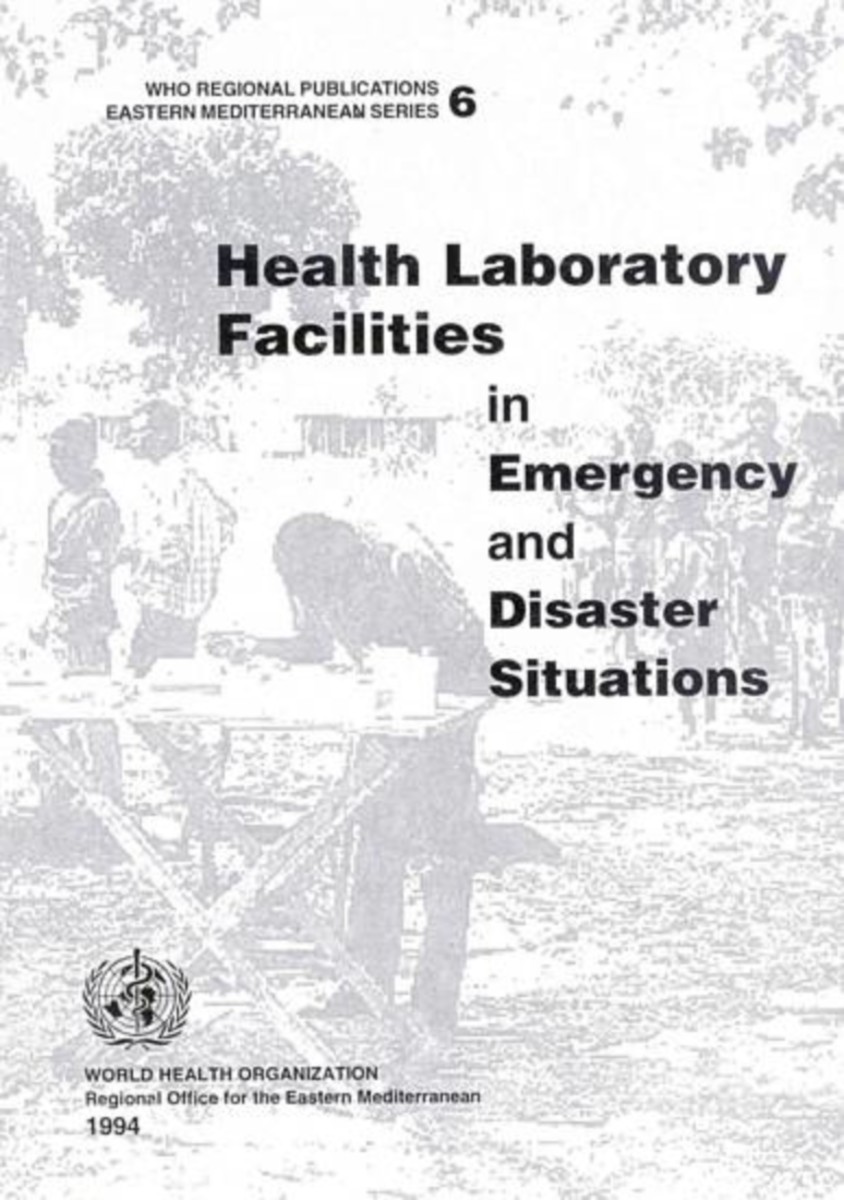Health Laboratory Facilities in Emergency and Disaster Situations
- Publisher
World Health Organization - Published
1st December 1994 - ISBN 9789290211822
- Language English
- Pages 168 pp.
- Size 6.75" x 9.5"
A comprehensive, illustrated guide to the provision of prompt and appropriate laboratory services during an emergency or disaster.
Addressed to national health authorities, aid agencies and relief workers, the manual draws on over 20 years of experience to define the essential laboratory services needed to limit morbidity and mortality, prevent epidemics, manage trauma, and collect vital epidemiological data. Throughout the manual, flow charts, tables and checklists are used to illustrate key actions and procedures, while line drawings and photographs depict essential equipment, types of laboratories, and model plans and layouts. Guidelines are specific to the harsh conditions usually seen in disasters, where equipment and supplies are limited, power supplies erratic, and the number of trained staff inadequate. To facilitate planning and purchasing decisions, the manual includes abundant information on the advantages and disadvantages of equipment in terms of costs, durability, ease of maintenance, and appropriateness to the anticipated workload. Additional details range from instructions for making a waste incinerator out of a metal drum, to advice on calculating energy requirements.
The book has twelve chapters. The opening chapters identify 29 diseases commonly encountered in different types of disasters and offer advice on how to anticipate disease outbreaks and the corresponding laboratory needs. Other chapters describe and illustrate different mobile and portable laboratories, identify the most suitable tests, including commercial kits for rapid diagnosis, outline procedures for testing water supplies, and explain the principles of laboratory safety, disinfection, and waste disposal during emergencies. In a key achievement, a chapter on laboratory kits and modules sets out the exact supplies that should be included in each of 22 modules designed to support different components of emergency laboratory work. Modules, which can be combined according to need, range in focus from kits for water testing, through a recommended microscope and accessories, to the supplies needed to perform 200 tuberculosis or bacteriology tests. The remaining chapters provide more detailed guidelines for energy supply, essential laboratory equipment, blood supply for transfusions, the safe handling and transport of specimens, and record keeping and reporting during emergencies.
... an excellent resource for those responsible for drawing up national contingency plans for an emergency or disaster ... highly recommended...
- New Zealand Journal of Medical Laboratory Science


